
The Digital Warden App, developed by PITB in collaboration with Punjab Traffic Police to facilitate traffic police officials to adopt a paperless work culture and process all the challans via mobile phones. The app generates electronic challans, which eliminates the need for paper-based challan books and also caters for fake challans, ensuring transparency and convenience.
The traditional challan system was paper-based, which made it difficult to maintain records and track the status of challans. The system was also prone to errors and fraud, which made it difficult to ensure transparency and accountability. The Punjab Traffic Police wanted to revamp the traditional challan system and make it more efficient and transparent.
The Digital Warden App was developed to address the aforementioned issues and provide a more efficient and transparent system for issuing and collecting traffic challans. The app provides real-time data on traffic violations committed and the number of paid and unpaid challans. The app has been designed to go paperless and process all the challans (fines) via mobile phones, which is a move towards a corruption-free and paperless work environment.
Extensive research on the traditional challan system and the challenges faced by the Punjab Traffic Police was conducted to understand the problem. We also conducted user interviews to understand the needs and pain points of the traffic police officials.
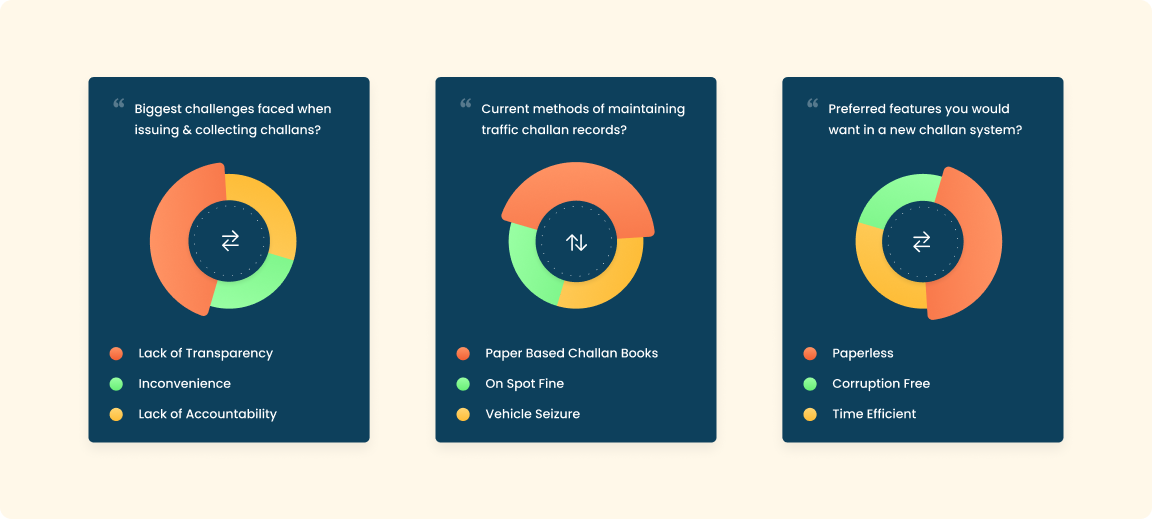
The user needs and pain points identified from the user research and synthesis are:

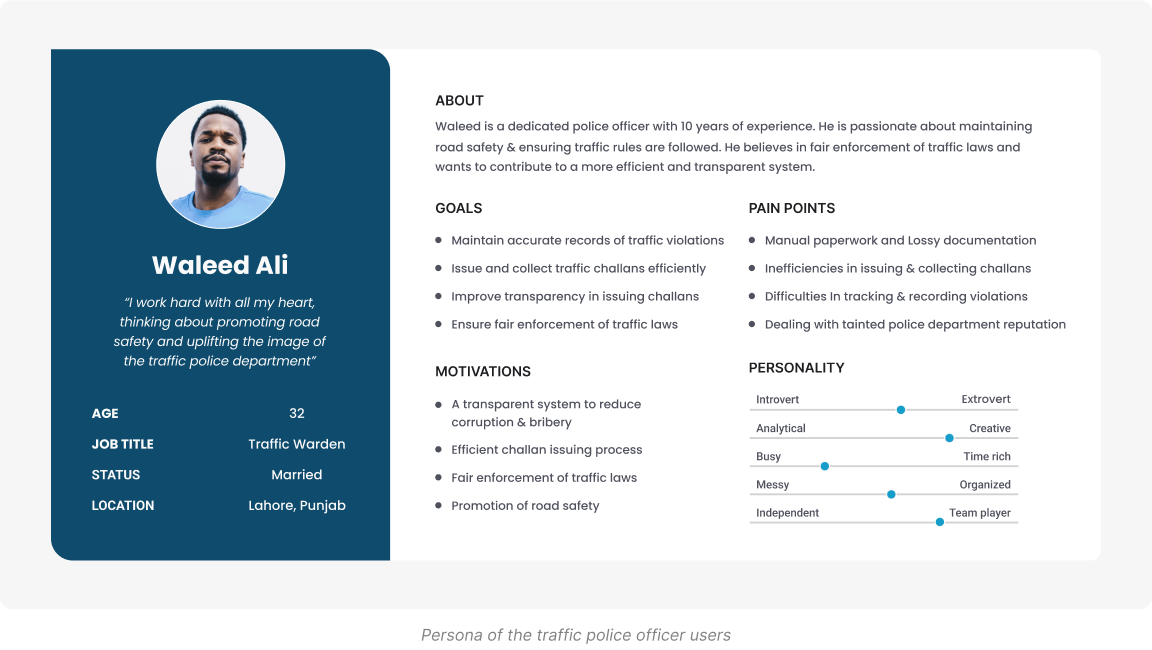
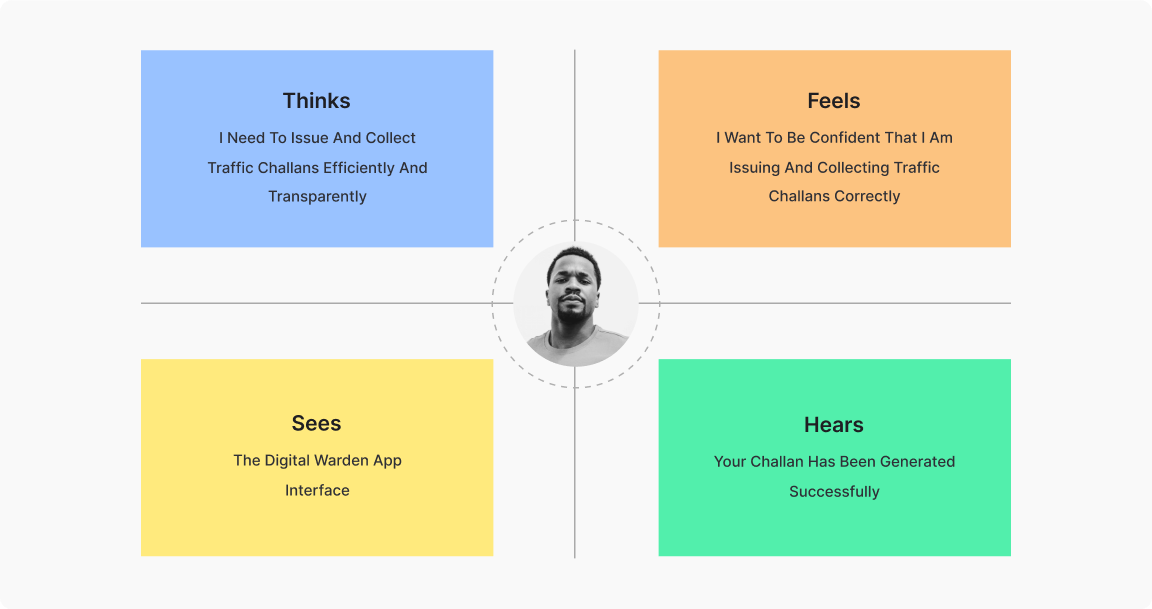

I started with the information architecture of the App.
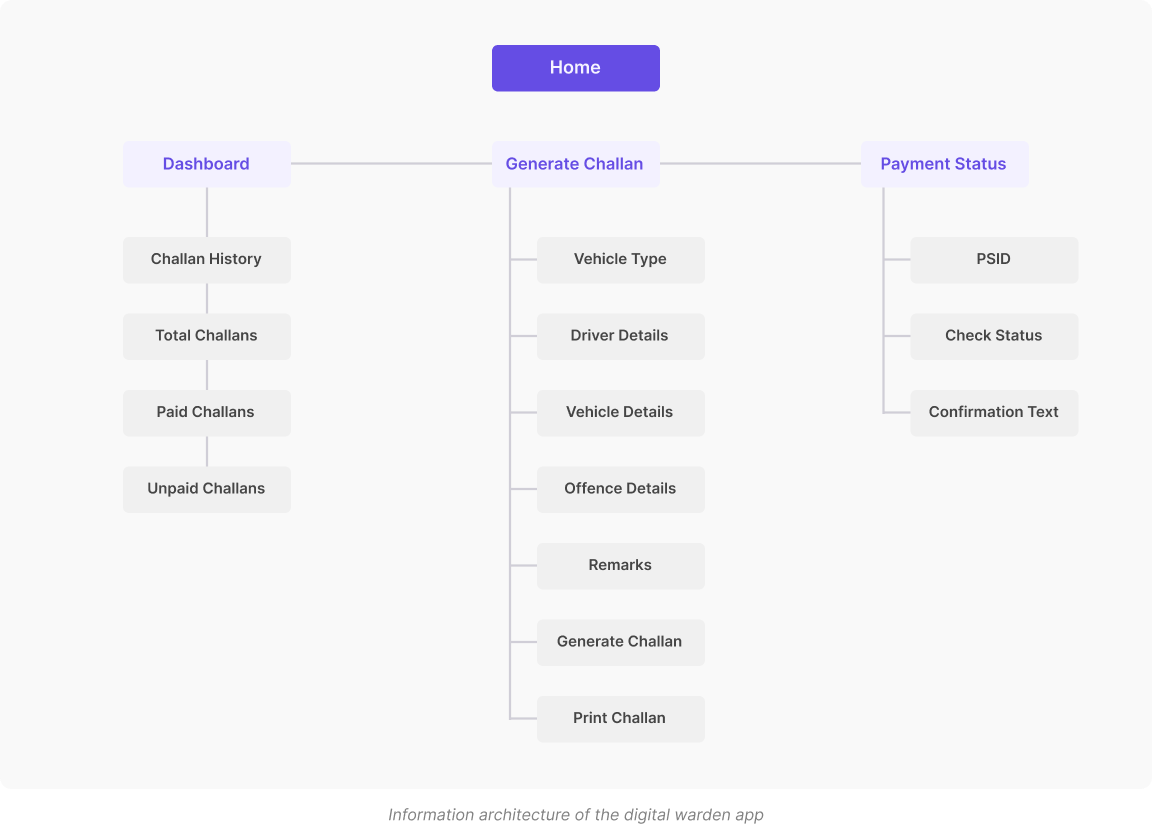
After conducting research and understanding the needs carefully, I started to work on the designs of the App.
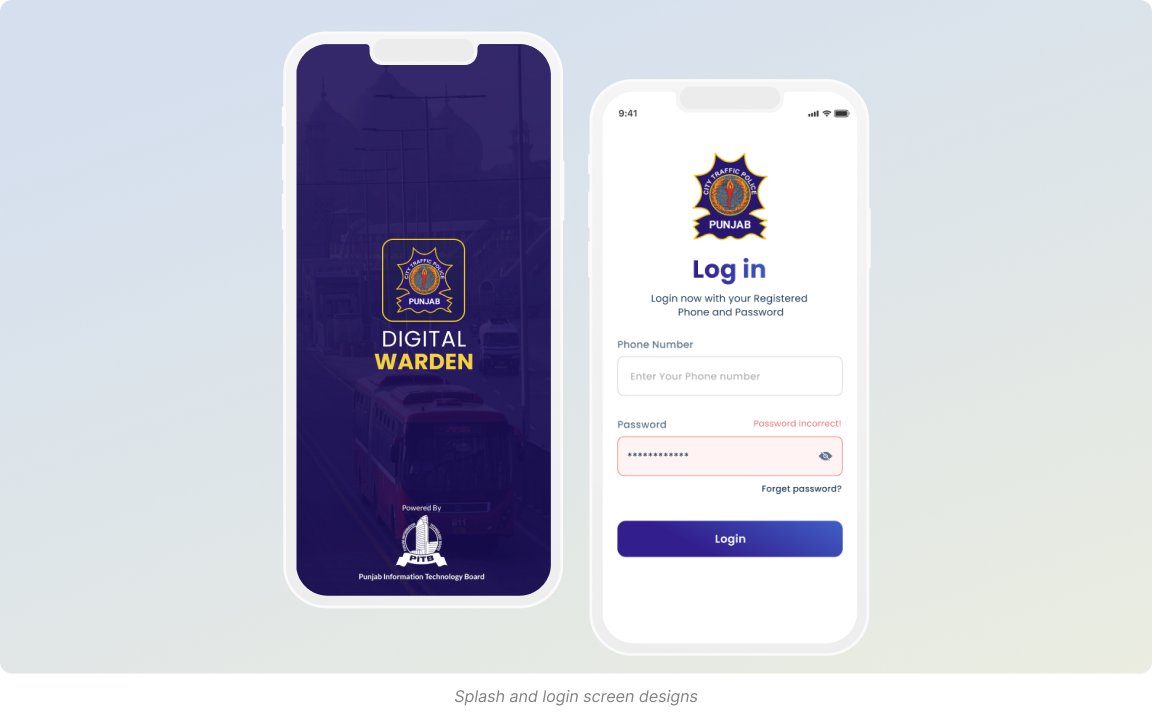
The home screen is the main screen of the app. It displays the user’s profile information, such as their name, vehicle number, and sector. The home screen also includes a menu that allows the user to access different sections of the app, such as “Challan History,” “Generate Challan,” and “Check Payment Status”

The Generate challan screen allows the user to report a traffic violation. The screen includes a form that requires the user to enter details such as the “Violator’s CNIC,” “Location of the violation”, “Type of violation”, and “Any additional comments”. The user can also attach a photo or video of the violation to the report.
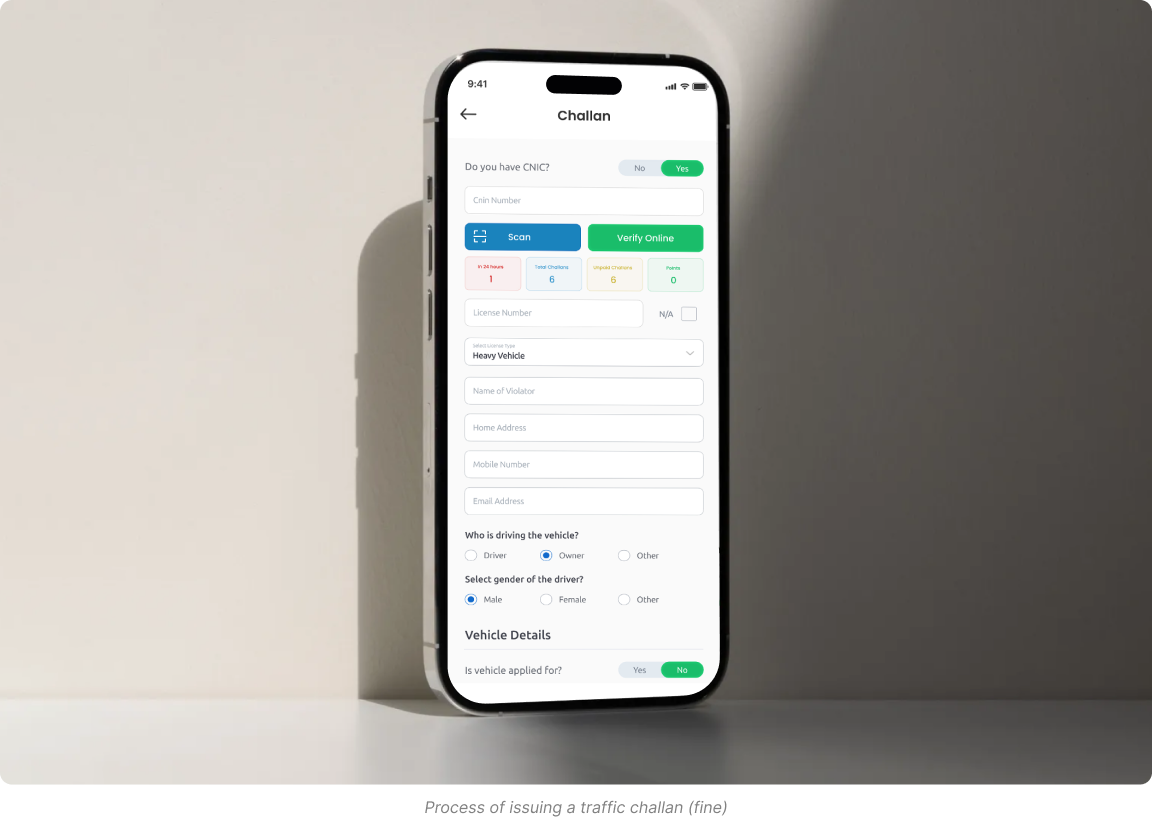
The Vehicles types screen allows the user to choose the vehicle type for which the challan is to be generated. The screen includes options such as “Car,” “Van/APV,” “Emergency Vehicle,” and “Other.”
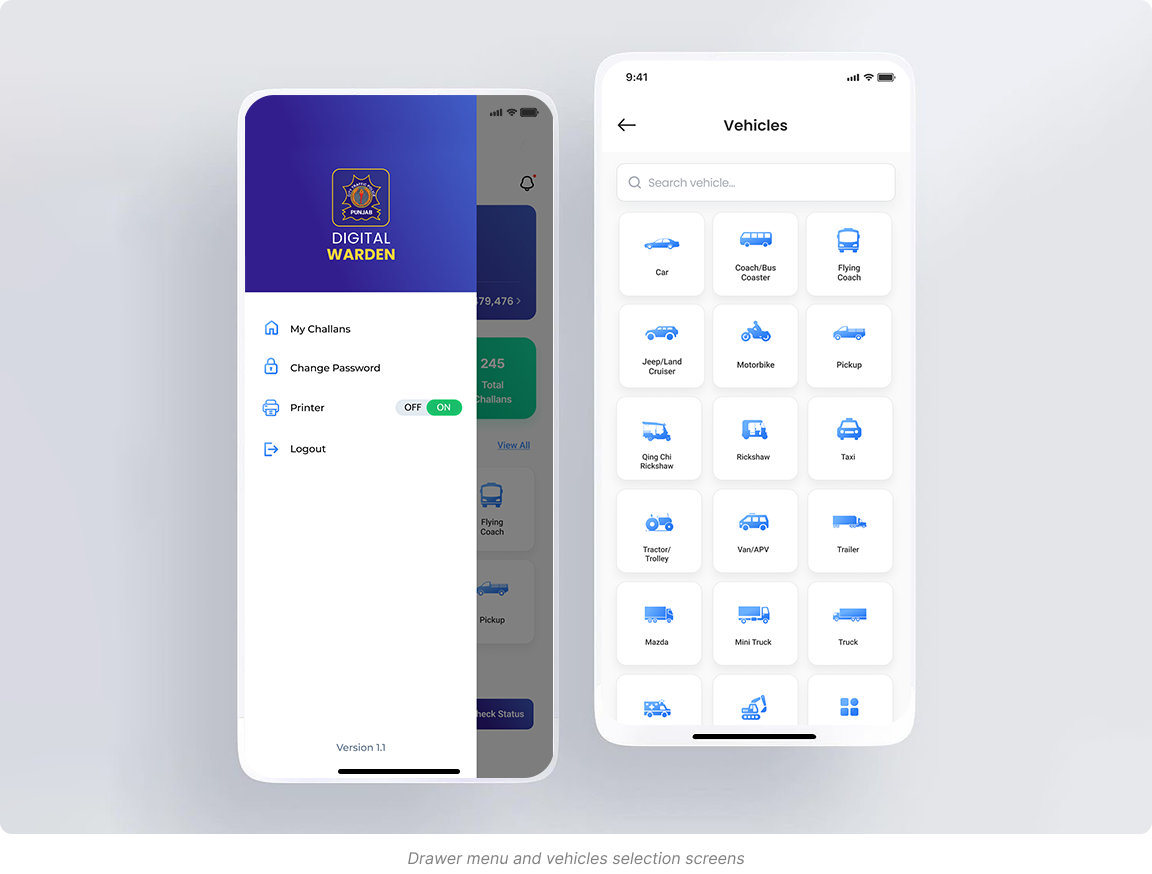
User testing sessions were conducted with 10 traffic police officials. They were requested to perform various tasks and scenarios using the app prototype, & their behavior, actions, and reactions were observed. To capture the user data & feedback, I employed the think-aloud protocol, the eye-tracking technique, & the screen-recording tool. I also requested them to complete the SUS (System Usability Scale) questionnaire to measure their satisfaction and perception of the app’s usability.
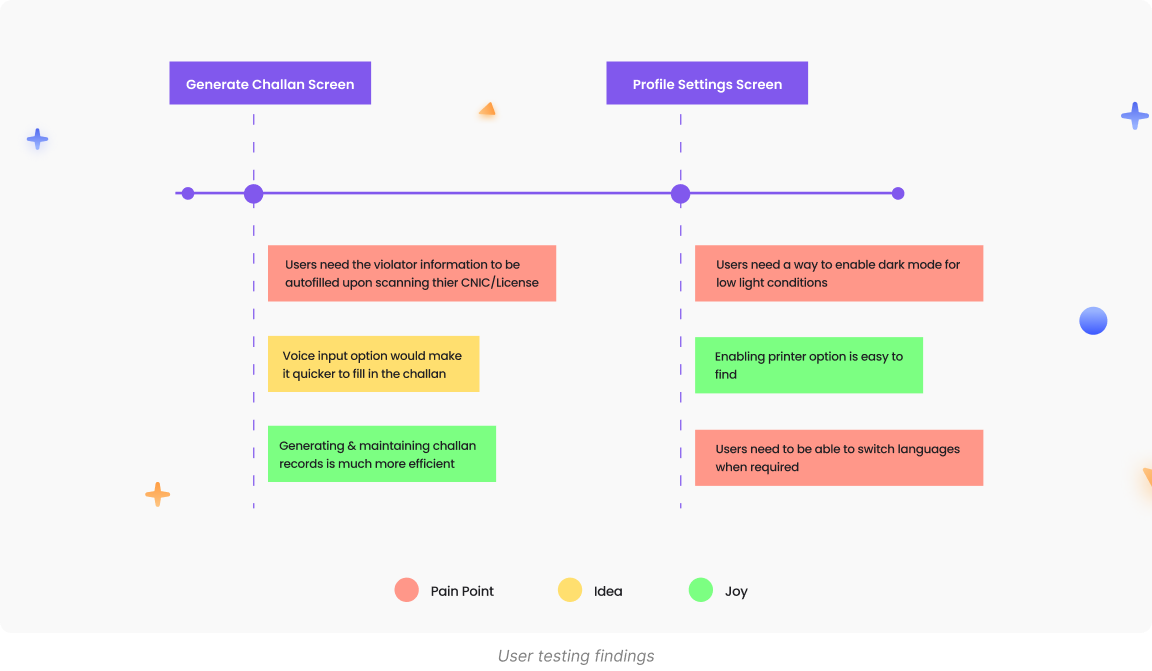
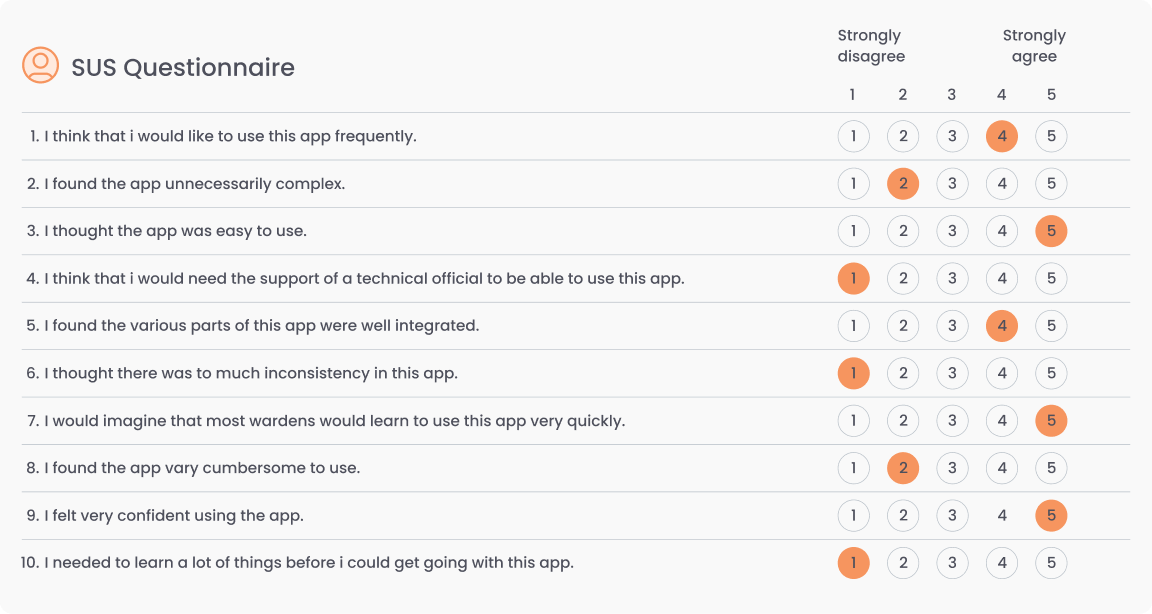
Transperancy: Eliminate fake challans and eradicate corrupt practices.
Digital Policing Pays Off: Over four million digital challans worth around Rs 1.75 billion have been issued since April 2022 till Feb 2023 via Digital Warden App, developed by Punjab Information Technology Board (PITB) for the city traffic police.
Going Green: The city traffic police saved more than Rs. 90 million in lieu of printing challan books.
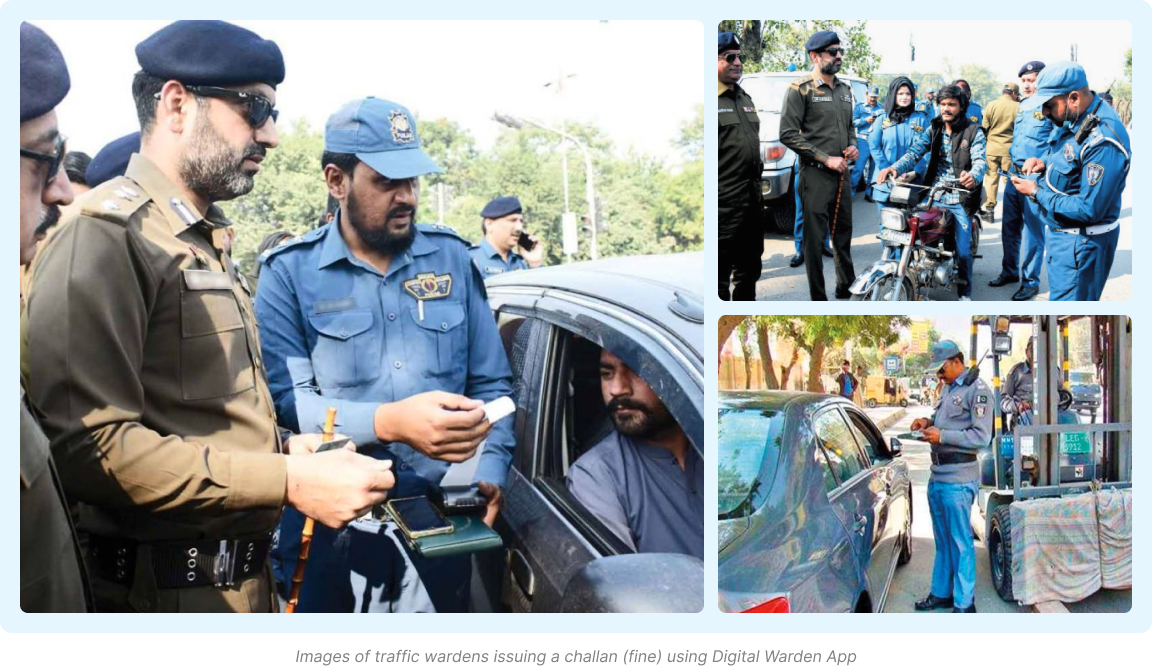
User Adoption: Encouraging wardens to adopt the app and use it for issuing challans and maintaining records.
Technical Issues: The app faced several technical issues during the development process, such as slow loading time.
Data Security: Ensuring the security of user data and prevent unauthorized access to sensitive information.
User-Centered Design: Importance of user-centered design and the need to involve users in the development process.
Agile Development: Benefits of agile development & the need to iterate frequently.
Usability Testing: Importance of usability testing and the need to identify and address usability issues early in the development process.
Collaboration: Importance of collaboration and the need to work closely with stakeholders to ensure the success of the app.